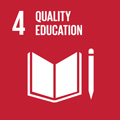- Docente: Sara Mizar Formentin
- Credits: 6
- SSD: ICAR/01
- Language: English
- Moduli: Sara Mizar Formentin (Modulo 1) Nicholas Fantuzzi (Modulo 2)
- Teaching Mode: In-person learning (entirely or partially) (Modulo 1); In-person learning (entirely or partially) (Modulo 2)
- Campus: Ravenna
- Corso: Second cycle degree programme (LM) in Offshore Engineering for Energy Transition (cod. 6707)
Learning outcomes
The course provides an introduction to classical computational tools and methods for engineering applications. Students will get knowledge of classical computational methods for the solution of systems of partial differential equations. They will be able to use the MATLAB environment for testing methods and critically evaluate the results obtained.
Course contents
The course is divided into two modules:
- Module 1: Numerical Computation and elements of Computational Fluid Dynamics (Sara Mizar Formentin)
- Module 2: Numerical Methods for PDEs (Nicholas Fantuzzi)
Module 1:
Elements of programming in Matlab environment
Numerical differentiation and integration:
- Finite difference formulas
- Basic Quadrature Formulas
Differential Ordinary Equations (ODE)
Introduction to Computational Fluid Dynamics (CFD):
- Review of conservation equations
- Lagrangian and Eulerian approaches
- Navier–Stokes Equations
- Concepts of numerical discretization
- Structure of a CFD code
- Basic introduction to OpenFOAM and MATLAB–CFD interfaces
Applications to Offshore Engineering
Module 2:
Some classes of differential equations:
- Elliptic equations
- Parabolic equations
- Hyperbolic equations
Interpolation and collocation:
- Cardinal functions
- Gauss integral
- Transformation and derivation
- Solution of a boundary value problem
- Solution with basis recombination
Time-step approximations:
- Parabolic equations
- Finite differences in time
- Finite differences in space
- Hyperbolic
Change of coordinates
- Chebyshev polynomials
Virtual work and energy principles in mechanics:
- Principle of virtual displacements
- Principle of minimum of total potential energy
- Hamilton’s principle for discrete systems (Lagrange method)
- Hamilton’s principle for continuum mechanics
Direct variational methods:
- Strong, weak, and variational formulations
- Ritz method
- Weighted-residual methods
Finite element method:
- 1D isoparametric elements
- 2D isoparametric elements
Readings/Bibliography
- U. Ascher, C. Greif, A first course in Numerical Methods, SIAM, 2011.
- J. P. Boyd: Chebyshev and Fourier spectral methods. Dover, 2000.
- A. J. M. Ferreira, N. Fantuzzi: MATLAB codes for finite element Analysis. Springer, 2020.
- H.K. Versteeg, W. Malalasekera. An Introduction to Computational Fluid Dynamics: The Finite Volume Method (2nd ed.)., 2007.
Throughout the course, Course Notes and Matlab scripts will be provided.
Teaching methods
Traditional lectures
The course takes place through frontal lessons and classrom computer-programmed exercises.
The lessons illustrate the principles and the fundamental theoretical and practical notions of the course. During the classroom exercises, applications of the notions are illustrated with supervised examples to be solved with the tutor.
Homeworks will be assigned weekly.
Module 2 of the course will be offered in a "flipped classroom" format. All the theoretical contents of the Module will be provided in the form of short videos (10-15min) divided by topic. Students are required to watch and study according to each theoretical content before the every week class. During each weekly face to face class, students will be asked to solve simple exercises to stimulate interactions and improve their skills. Every week a new topic will be covered, thus the Module is made of 6 topics for a 6 weeks Module.
Assessment methods
Exam:
- Module 1: Homework and written test.
- Module 2: Homework and multiple choice quiz.
The final grade is obtained as the average of the two modules. Successful completion of the course is conditional upon achieving a passing grade in both parts of the examination.
Teaching tools
The slides of the course and all the exercises presented and proposed to the students are available on Virtuale repository.
All the classes will be recorded and they will be available to students
Office hours
See the website of Sara Mizar Formentin
See the website of Nicholas Fantuzzi
SDGs

This teaching activity contributes to the achievement of the Sustainable Development Goals of the UN 2030 Agenda.
